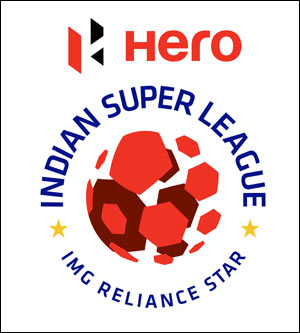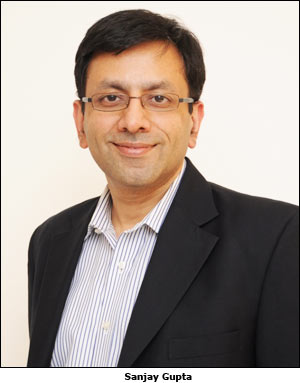Govt alarms green group with Dibang hydropower plant approval
Tommy Wilkes New Delhi
Last Updated: October 10, 2014 | 10:35 IST
In late August, the environment ministry rejected a proposal
to build what would be the country's largest hydropower plant in a
remote and pristine part of the country's northeast because of the
potential damage to an area rich in biodiversity.
Less than a
month later and, according to two environment ministry officials, after
pressure from Prime Minister Narendra Modi's office, permission was
granted for the 3,000 megawatt Dibang plant, the construction of which
will mean clearing some 4,000 hectares (9,900 acres) of forest.
The
plant is one of hundreds of projects, many of which were repeatedly
rejected in the past, that have been approved since Modi came to power
in May.
That trend has alarmed environmentalists, who say the
country's natural habitat is under assault in the name of industrial
development.
"The floodgates are open," said Sunita Narain,
director general of the Delhi-based Centre for Science and Environment
(CSE). "We were in trouble with the last government and we are in even
more trouble with this government. Rather than try and reform the
system, they are picking at the edges."
In the five months since
it came to power, Modi's government has relaxed several environmental
rules to make it easier for companies to build new projects.
Small
and mid-sized coal miners can now expand production by 50 per cent
without public consent, and polluting industries can operate closer to
national parks.
Other decisions have been devolved to state governments, which tend to be more open to polluting projects than New Delhi.
Consecutive
governments have been blamed for neglecting the environment and
prioritising industrial projects, but critics say they see signs that PM
Modi has at best an ambiguous attitude to environmental issues.
The
Modi government has tightened controls on funding for Greenpeace and
reduced the number of independent members on a committee charged with
assessing projects that lie in or close to protected wildlife areas.
In
its defence, the government says it is not sacrificing the country's
natural habitat but approving projects which are necessary for the
country's development, while ensuring proper checks and balances are put
in place.
Modi won elections on a pledge to revive the economy
and bring electricity to 400 hundred million Indians not connected to
the grid. Hydropower plants like Dibang could provide more electricity
to local people, as well as help tackle the country's chronic energy
shortages.
FAVOURING DEVELOPMENT
The push to fast-track
development comes as India Inc looks for Modi to make good on pledges to
reform the system for clearances, which they complain has long held up
construction of roads, factories and mines and stymied economic growth.
"There
is no doubt that things (clearances) should be sped up," said Isaac
George, chief financial officer at GVK Power & Infrastructure, which
operates mines, power plants and airports. "But there should be a
proper balance between industrialisation and the environment."
At
the end of June, 298 projects were awaiting environmental approval, a
backlog that Environment Minister Prakash Javadekar said last month he
had subsequently cleared. Only a handful of those projects were rejected
or deferred for further analysis.
By contrast, around 400
projects were given environmental clearance in 2013 under the previous
government, when it was on a pre-election drive to boost the economy,
and around 100 in 2012, data compiled by CSE show.
Among projects
granted approval to clear forests and replace them elsewhere were six
leases for salt manufacturing in the Prime Minister's home state Gujarat
that were rejected under the last government because they would lie
close to a marine national park.
"We have cleared hundreds of projects. We don't keep count of how many," Javadekar said in a telephone interview.
He
said his ministry was not sacrificing the environment in its push to
clear projects, and pointed to the cancellation of 46 industrial
licences for units polluting the Ganges river, and tighter regulations
on the heavily polluting cement sector.
"If the project is not environmentally friendly, it won't get clearance. We are favouring people, we are favouring development."
Concern
about environmental damage wrought by a push to industrialise and raise
living standards for the country's 1.2 billion people is not new. Air
pollution, poor sanitation and degraded lands cost the economy an
estimated $61 billion a year, according to a 2013 World Bank study.
DAMS, FLAMINGOS AND PHEASANTS
The
huge Dibang hydro plant, first mooted in 2008 but twice rejected by the
environment ministry's Forest Advisory Committee (FAC) in 2013 and this
April, won approval in September to clear forest on condition the
proposed height of the 288-metre concrete gravity dam be reduced by 20
metres, said a senior environment ministry official.
Following the
FAC's concerns, however, the ministry rejected a plan in August to
lower the dam by only 10 metres. That would have meant the amount of
lost forested land falling 9 per cent, rather than around 20 per cent
under the 20 metre reduction plan.
In an August 28 letter seen by
Reuters, the ministry said the 10 metre proposal endangered a "rich
mature forest ecosystem" with a "large number of endemic and endangered
flora and fauna" and threatened local tribal groups dependent on the
forests.
The impact on a national park downstream was yet to be studied, it said.
The Prime Minister's efforts to amend environmental rules have not all succeeded, however.
A
move by his government to slash the number of independent members on
the National Board for Wildlife, a statutory body chaired by the Prime
Minister that can approve or block proposed projects close to or inside
protected areas, was in breach of the law, the Supreme Court ruled in
August.
The court said decisions made at an August 12-13 meeting
of the board's standing committee, where, according to a person with
direct knowledge of the meeting, about 130 of 140 projects were cleared,
are to have no effect until its next hearing.
Planned projects
include a twice-rejected road running near the Pakistan border and
through "Flamingo City", Asia's largest breeding ground for flamingos,
and a cement plant less than 4 km (2.5 miles) from the Majathal Wildlife
Sanctuary, home of the endangered cheer pheasant.
The government
has not made minutes from the August meeting public, and a ministry
spokesperson did not respond to requests for comment on it.
"This
road could doom the populations of flamingos across the subcontinent,"
said Prerna Bindra, a former board member who rejected the road in 2013.
"The national board is supposed to have a very proactive conservation
role. Very unfortunately, the whole system now seems to be geared for
clearances
vijay kr yadav
pgdm 2nd year

























